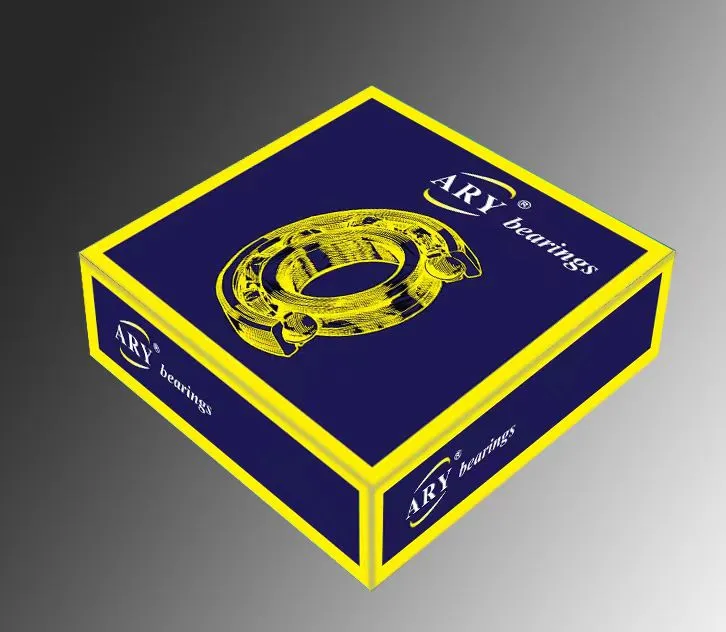
dec . 02, 2024 02:00 Back to list
Understanding Radial and Thrust Bearings in Mechanical Applications and Their Importance
Understanding Radial and Thrust Bearings Key Components in Rotational Systems
In the world of engineering, bearings serve as crucial components in the functionality and efficiency of machines. Two primary types of bearings frequently used in various applications are radial bearings and thrust bearings. Both serve to support rotating elements, but they do so in different ways and for distinct purposes. This article explores the fundamentals of radial and thrust bearings, differentiating their designs, functions, and applications.
What is a Radial Bearing?
Radial bearings, also known as journal bearings, are designed to support radial loads—forces acting perpendicular to the axis of rotation. These bearings consist primarily of an inner ring, an outer ring, and rolling elements, which can be balls or cylindrical rollers. The primary function of a radial bearing is to reduce friction between moving parts, allowing for smooth rotation and increased efficiency.
Common types of radial bearings include deep groove ball bearings, angular contact ball bearings, and roller bearings. Each type has specific design features that cater to various load conditions. For instance, deep groove ball bearings are capable of accommodating both radial and axial loads, making them extremely versatile. They are widely utilized in applications ranging from electric motors to automotive systems.
The effectiveness of radial bearings lies in their ability to distribute loads evenly. When properly installed and maintained, radial bearings minimize wear and tear on machinery, extending the lifespan of the components they support. These bearings play a critical role in ensuring the reliability of rotating systems in a myriad of industries, from manufacturing to aerospace.
What is a Thrust Bearing?
Thrust bearings, on the other hand, are designed specifically to handle axial loads—forces that act parallel to the axis of rotation. They are essential in applications where movement is primarily along the shaft's direction. Much like radial bearings, thrust bearings come in various designs, including flat thrust bearings, angular contact bearings, and tapered roller thrust bearings.
One of the standout features of thrust bearings is their ability to manage high levels of axial load while offering minimal friction. They achieve this by utilizing a large surface area where the bearings contact the shaft and housing. The thrust load can lead to significant wear on the components if not properly managed, making the design of thrust bearings critical in systems such as gearboxes, automotive applications, and thrust assemblies in turbines.
radial bearing and thrust bearing

Differences Between Radial and Thrust Bearings
The fundamental difference between radial and thrust bearings lies in the type of loads they support. Radial bearings are designed to handle loads perpendicular to the shaft, while thrust bearings handle loads parallel to the shaft. This distinction influences the design and construction of each bearing type.
In addition to load orientation, the design attributes further differentiate these two types of bearings. Radial bearings often feature rolling elements that allow for smooth rotation under radial load, while thrust bearings emphasize a more robust design that counters axial movement. Selection criteria will depend heavily on the application requirements, including the load type, speed, precision, and environmental conditions.
Applications of Radial and Thrust Bearings
Both types of bearings find applications across different industries. Radial bearings are ubiquitous in machinery requiring smooth rotational movement, such as electric motors, pumps, and conveyor systems. They are preferred in situations where uniform load distribution is critical.
Conversely, thrust bearings are commonly found in equipment that experiences axial loading, such as automotive transmissions, propulsion systems in ships, and aerospace engines. Their ability to handle significant thrust loads makes them indispensable in high-performance machinery where precision and reliability are paramount.
Conclusion
Understanding the differences between radial and thrust bearings is essential for engineers and designers tasked with creating efficient and reliable machinery. Each bearing type serves a unique purpose in supporting rotating components, and their selection should be based on the specific requirements of the application. By correctly implementing these bearings, industries can ensure enhanced performance, reduced friction, and longevity of equipment, ultimately translating into improved productivity and reduced operational costs. As technology advances, continued innovation in bearing design will likely yield even more efficient solutions to meet the ever-evolving demands of modern engineering.
Latest news
-
Durable Greenhouse Pillow Block Bearings for Reliable Ventilation
NewsAug.31,2025
-
Spherical Roller Bearings Applications: Heavy Duty, Self-Aligning
NewsAug.30,2025
-
Premium Deep Groove Ball Bearings | High Speed & Reliability
NewsAug.29,2025
-
Durable Scaffolding Clamps - Secure & Reliable Tube Connectors
NewsAug.28,2025
-
Common Failures in Thrust Ball Bearings and Solutions
NewsAug.22,2025
-
How Tapered Roller Bearings Can Take Shock Loads
NewsAug.22,2025
